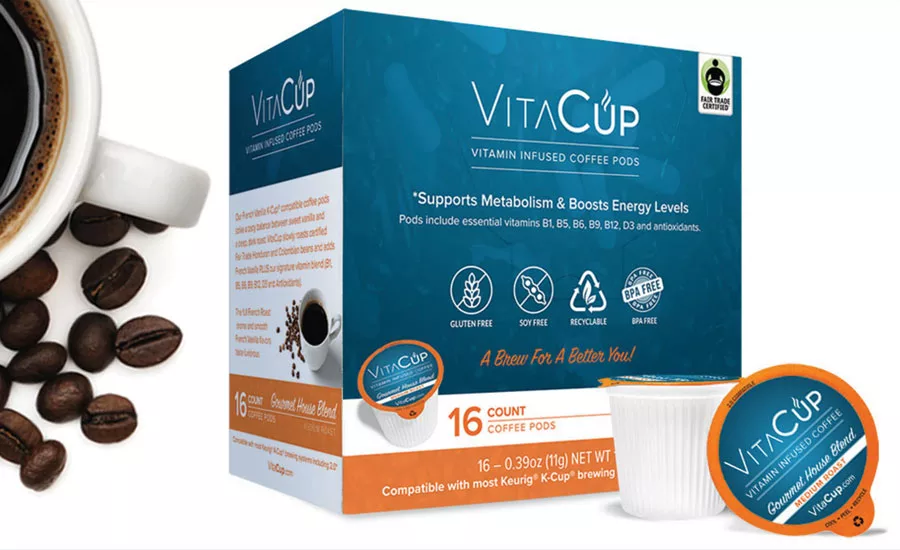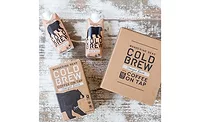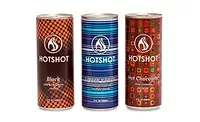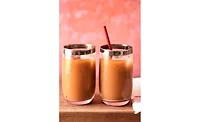iGeneration, millennials increasing coffee consumption
Cold-brew coffee boosts RTD segment, coffee pods experience decelerated growth







As millennials age and iGeneration consumers gain buying power, their consumption habits of coffee beverages are growing and changing. In conjunction with health-and-wellness trends and functional benefits, coffee has become a go-to category for these consumers who look for premium, specialty and value-added products.
“The U.S. coffee market and its respective segments have all performed well over the past year,” says Chrystalleni Stivaros, analyst at Los Angeles-based IBISWorld. “The number of people consuming coffee on a regular basis has increased, particularly among youth.”
In fact, 83 percent of adults drink some type of coffee at home, according to Chicago-based Mintel in its July report titled “Coffee – US.” The market research firm also notes the increasing frequency and unique consumption habits of younger adult consumers.
“Younger adults are more engaged coffee consumers, having grown up with diverse and higher-end offerings, such as Starbucks, being widely available to them, making specialty coffee more familiar [to] and in-demand [by] younger adults,” the market research firm explains. “Further, individuals in the iGen and millennial generations are more likely than their older counterparts to be drinking more coffee throughout the day than they did a year ago, highlighting the impact that millennial and iGen adults have on the coffee market.”
Yet, increased consumption isn’t the only factor that is boosting the coffee market, according to IBISWorld’s Stivaros. Premiumization trends also are impacting the overall category as well, with gourmet coffees expected to comprise more than half of coffee consumed this year, she adds.
In line with this, organic and Fair Trade-certified coffee products are in demand and have become expected in the market, Stivaros says.
“Organic and Fair Trade coffee is not particularly a new trend,” she explains. “It has almost become a requirement among top and certain niche producers. Major companies all tout their use of Fair Trade or ‘ethically sourced’ coffee beans.”
Looking forward, innovation and the proliferation of a variety of coffee products can drive growth for the coffee category, Mintel reports.
“While coffee sales are estimated to slow in 2017, opportunities exist to reinvigorate sales, particularly by reaching the highly engaged iGen and millennial consumers who are likely to be interested in new product trial and are open to trading up for premium offerings,” Mintel’s report states. “Health-and-wellness-oriented benefits can resonate with those who are proactive about leading healthy lifestyles, while innovations such as alcoholic cold brew or nitro cold brew could help to increase market penetration of cold coffee.”
Despite the anticipated growth for the category, manufacturers are expected to see the cost of coffee beans rise, according to IBISWorld’s February report titled “Coffee Production in the U.S.”
The market research firm notes that the world price of coffee has fluctuated throughout the years, increasing 43.8 percent in 2014 and dropping
20.9 percent in 2015.
“The world price of coffee determines the price coffee producers charge their downstream markets,” the report explains. “Growing demand for coffee, particularly from emerging economies, coupled with low coffee bean harvest yields (caused by severe climate conditions) has caused the price of coffee to rise. Coffee producers who enjoy strong brand loyalty can pass high coffee bean prices to consumers in the form of marked-up coffee prices, while other industry operators struggle to remain competitive. The world price of coffee is expected to increase in 2017, presenting a potential opportunity for the industry.”
In fact, the world price of coffee is expected to increase at an annualized rate of 0.8 percent, to $1.78 a pound, during the five years to 2022, the report states.
Also challenging to players in this category is the high level of competition within the market, the report explains. Offering unique products that stand out to consumers will be important for brands that wish to gain shelf space in retail.
“Players within the industry also compete on their ability to be innovative and differentiate a product or brand from its competition,” the report explains. “Considering the limited opportunities for growth within the industry, it is important for manufacturers to distinguish themselves in order to maintain market share. Changing consumer tastes and dietary trends have further compelled producers to be innovative with packaging, marketing and labeling initiatives.”
Cold-brew craze
Making the most waves in the coffee category as of late is cold-brew coffee. Experts note that the sub-segment has helped to boost the ready-to-drink (RTD) coffee segment by offering more premium options in RTD formats or foodservice establishments.
“The recent introduction of cold-brew coffee has been a major boon for coffee producers and also for coffee shops since most consumers do not make this kind of coffee at home,” IBISWorld’s Stivaros says.
The blossoming cold-brew coffee sub-segment has helped to increase sales in the RTD coffee category and should continue to grow moving forward, says Gary Hemphill, managing director of research for Beverage Marketing Corporation (BMC), New York.
Outside of the RTD cold-brew sub-segment, Mintel notes that many consumers are not tapped into the cold-brew trend, especially in their at-home consumption.
“The average consumer is not a highly engaged cold coffee drinker, with a mere 16 percent reporting that they drink cold coffee more now than in the past, and one in 10 agreeing that cold brew takes too long to make. Further, consumers are generally turning to foodservice to purchase cold coffee, perhaps intimidated by the process of making it at home.”
Innovation will be essential for proliferating cold coffee consumption at home, the report states. Yet, manufacturers are launching more convenient at-home cold coffee options. For example, Community Coffee Co. recently introduced Community Cold Brew Coffee. The cold-brew filter bags are easy and convenient to use, the company says. Consumers steep two filter bags in four cups of water for as long as 24 hours and add an additional three cups of water after steeping.
Although the cold-brew coffee sub-segment has been a strong growth driver, other RTD varietals also are performing well, Stivaros says.
“RTD coffees are still on the rise,” she explains. “Millennials are maintaining its popularity. The fast-paced lifestyle of Americans creates a need for quick options, especially in the morning. Furthermore, RTD coffees are consumed cold, piggy-backing on the very popular iced coffee and cold-brew coffee trends.”
BMC’s Hemphill also expects continued growth for the RTD coffee segment, touting not just sales, but also innovation and new entrants.
“We project solid growth for ready-to-drink coffee in the years ahead,” he says. “It remains relatively under-developed and continues to be dominated by the partnership between Starbucks and PepsiCo. We believe the category is likely to see more new players, more innovation and healthy growth in years ahead.”
In its February report titled “RTD Coffee in the U.S.,” Chicago-based Euromonitor International forecasts the RTD segment to continue growing, but at a slower rate, relying on the proliferation of cold-brew coffees.
“The slowdown will, in part, be a result of growth stemming from a larger base as the potential for new consumers diminishes,” it states. “However, having a stronger impact on growth will be the anticipated proliferation of RTD cold-brew coffee, where package volumes are relatively small as a result of the naturally high caffeine content. In response, the forecast period is expected to bear witness to continuous unit price growth, an anomaly from the historic trend of near annual unit price declines experienced over 2004-2014. Hence, the category is predicted to record a strong value [compound annual growth rate] (CAGR) of 9 percent at constant 2016 prices.
“Much of the growth forecast for RTD coffee hinges on the anticipation that producers will adapt to the cold-brew trend,” it continues. “If this does not happen, forecast growth would likely be slower as traditional RTD coffee reaches maturity. Also threatening growth will be the possibility of health trends negatively impacting RTD coffee products, which in many cases can be laden with added sugar and fat from dairy.”
Keeping it hot
When it comes to the hot coffee segment, coffee pods have driven growth for the past several years. However, as market penetration comes to a tipping point, growth for the segment is starting to decelerate, experts say.
“Coffee pods helped to revolutionize the homebrewing coffee segment with an easier, faster, more convenient method of coffee brewing,” BMC’s Hemphill explains. “Sales of coffee pods have slowed from their lofty growth years ago.”
According to Euromonitor’s January “Coffee in the U.S.” report, coffee pods were the fastest-growing segment in 2016, experiencing 12 percent volume growth and 7 percent current value growth for the year. However, these results are “well below” the previous year’s review period, it says.
“While 12 percent retail volume sales growth in any multi-billion U.S. dollar category is impressive, the volume gain of fresh ground coffee pods between 2015 and 2016 reached 8,000 tons, which was around one-third of the gain in 2013, when coffee pod growth peaked,” the report states. “The slowdown in the growth of fresh ground coffee pods is both expected and justified. The penetration potential for pod coffee machines, which is pivotal to sustain rapid growth of coffee pod sales, has always had a limit. This has been exemplified by declines in unit volume sales of pod coffee machines in 2015 and 2016.”
Although coffee pods have experienced deceleration, in 2016, coffee beans posted the segment's highest growth rate since 2012. The segment saw retail volume sales grow 6 percent last year, according to Euromonitor’s “Coffee in the US” report.
“Despite being a traditional, well-saturated sub-category, fresh coffee beans experienced renewed consumer interest as the premium coffee culture thrived in the U.S.,” the market research firm explains. “Where fresh ground coffee pods led growth due to the convenience factor, whole coffee beans have found fresh demand from consumers who appreciate the finer details of coffee flavor and production and [the] rituals associated with its preparation.”
In line with the increased interest, coffee companies are releasing more premium roasted coffee options.
For example, Java Trading Co. introduced Alumbre, its first line of branded coffee. Available in five ultra-premium varieties, the coffees are made with hand-picked beans from heritage growing regions, the company says.
Additionally, IBISWorld notes in its report that roast and ground coffee are expected to comprise the largest share of category revenue in 2016, accounting for about 41.8 percent of category revenue. This compares with the coffee pod category, which the market research firm estimates will make up about 37.4 percent of industry revenue. BI
Looking for a reprint of this article?
From high-res PDFs to custom plaques, order your copy today!





